What is SAP and how to implement it in your company
What is SAP? SAP is the world’s leading enterprise resource planning (ERP) platform used to run finance, supply chain, manufacturing, sales, procurement, HR, and more in one integrated system. The latest generation, SAP S/4HANA, runs on the in-memory SAP HANA database to deliver real-time analytics, simpler processes, and cloud-ready scalability. This guide explains what SAP is, how it works, and how it helps leaders improve performance and resilience. For a detailed SAP S/4HANA vs SAP ECC comparison, read our dedicated article.
What SAP is
SAP (systems, applications, and products in data processing) provides an integrated suite that connects every core business function to a single source of truth. Instead of siloed tools, SAP standardizes data models and processes across the enterprise, enabling consistent reporting, automated controls, and faster decision-making. See how integrated platforms streamline operations in our overview of integrated management systems.
Why SAP matters for business outcomes
- Operational efficiency: standardized processes, fewer manual handoffs, and embedded controls reduce cost and error.
- Real-time decisions: live operational and financial visibility improves forecasting, inventory optimization, and cash conversion.
- Scalability and resilience: a common backbone supports growth, M&A integration, and regulatory requirements.
- Innovation readiness: modern SAP landscapes enable AI, automation, and advanced analytics use cases.
What SAP consists of: core modules
Although every implementation is tailored, these core modules are the backbone of most SAP landscapes:
| Module | What it does |
|---|---|
| FI (financial accounting) | General ledger, accounts payable/receivable, asset accounting, financial close, statutory reporting. |
| CO (controlling) | Cost centers, profit centers, internal orders, product costing, profitability analysis (CO-PA). |
| MM (materials management) | Procurement, inventory, vendor management, invoice verification. |
| SD (sales and distribution) | Order-to-cash, pricing, delivery, billing, revenue recognition integrations. |
| PP (production planning) | MRP, shop floor execution, capacity planning, BOMs and routings. Learn more in our production planning with SAP overview. |
| QM (quality management) | Inspection plans, quality notifications, compliance checks across supply chain. |
| EWM/WM (warehouse management) | Bin-level control, cross-docking, labor and slotting optimization. |
| TM (transportation management) | Freight planning, tendering, execution, and settlement. |
| HCM/SuccessFactors | Core HR, talent, payroll, and workforce analytics (often cloud-based with SuccessFactors). |
| Ariba, IBP, BTP (key extensions) | Supplier collaboration (Ariba), integrated planning (IBP), and extensibility/automation (Business Technology Platform). |
SAP characteristics that drive value
Below are the capabilities business leaders ask for most often and the outcomes they enable across finance, supply chain, and operations.
| Capability | Business impact |
|---|---|
| Single source of truth | Consistent financials and operations data across entities, speeding monthly close and audit readiness. |
| Real-time analytics | Live dashboards for cash, inventory, and production enable faster decisions and exception-based management. |
| Process automation | Automated 3-way match, credit checks, MRP runs, and workflow approvals reduce manual effort and errors. |
| Embedded controls and compliance | Segregation of duties, approval limits, and audit trails strengthen governance and reduce risk exposure. |
| Integrated planning | Sales, operations, and financial planning align to improve service levels and working capital. |
| Supplier and customer collaboration | Connected networks streamline sourcing, contracts, order promises, and dispute resolution. |
| Extensibility with low-code and APIs | Rapidly add apps and automations without breaking the core, accelerating time-to-value. |
| Globalization and localization | Prebuilt country packages for taxes, languages, and regulations shorten rollouts and ensure compliance. |
Who benefits and how
SAP impacts each leadership role differently. Use this summary to align value with stakeholder priorities.
| Role | Top outcomes from SAP |
|---|---|
| CFO | Faster close, real-time margin visibility, cash optimization, and stronger controls for audits and compliance. |
| COO | Standardized operations, service-level improvements, cost-to-serve reduction, and resilient supply chain planning. |
| CIO/CTO | Rationalized application landscape, API-first integrations, clean core strategy, and scalable security posture. |
| Supply chain leader | Demand sensing, inventory optimization, transportation visibility, and quality compliance. |
| HR and talent | Single workforce profile, streamlined payroll, skills visibility, and analytics for productivity and retention. |
Proof in practice
Organizations across industries leverage SAP to scale faster and standardize operations. See how we supported Lavoro’s growth journey in this client case and learn more about the Lavoro Group.
Where to go next
- Evaluate the platform fit for your roadmap by reading our SAP S/4HANA vs SAP ECC comparison.
- Explore how integrated platforms boost performance in integrated management systems.
- Dive deeper into operations with production planning with SAP.
Talk to experts about your SAP options
Get a quick assessment of your landscape and a roadmap to unlock value with SAP.

